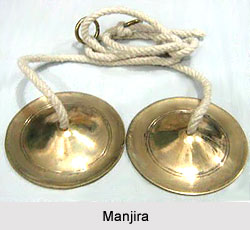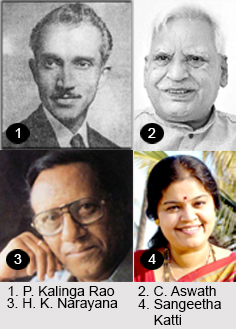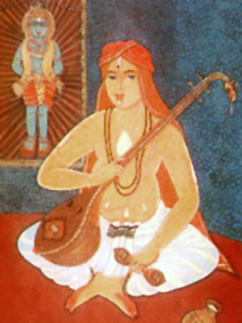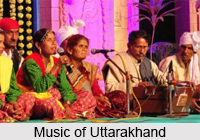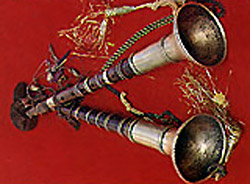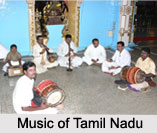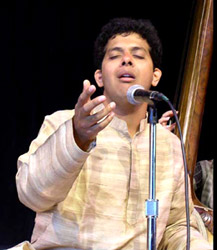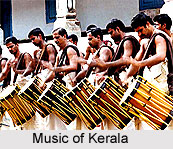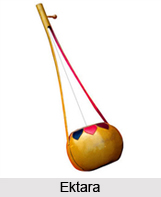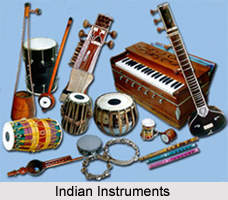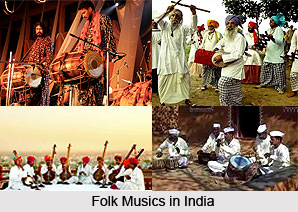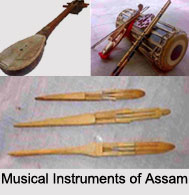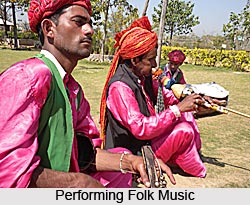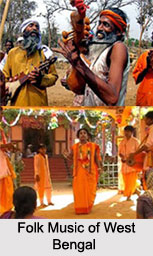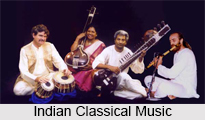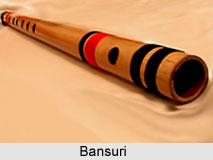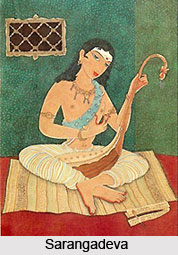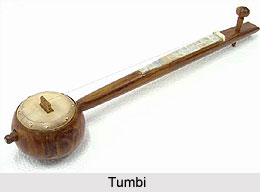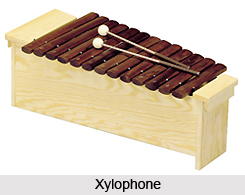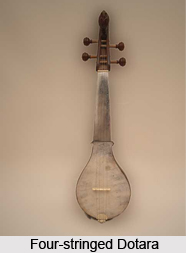 Dotara is a string instrument of basically two kinds. One is the four-stringed instrument associated with Bengali folk music. It is prevalent is West Bengal, Assam and eastern Bihar in India and also in Bangladesh. The other is the much simpler two-stringed dotara found throughout South Asia. It is the original version of dotara, indicative of its very name which implies two strings. The appearance and structure of a dotara resembles to a mandolin.
Dotara is a string instrument of basically two kinds. One is the four-stringed instrument associated with Bengali folk music. It is prevalent is West Bengal, Assam and eastern Bihar in India and also in Bangladesh. The other is the much simpler two-stringed dotara found throughout South Asia. It is the original version of dotara, indicative of its very name which implies two strings. The appearance and structure of a dotara resembles to a mandolin.
Etymology of Dotara
The etymology of the term "Dotara" can be traced to its origins in the Bengali language, where it is formed by combining two words: "do," signifying "two," and "tar," meaning "string." The appended "a" serves to denote possession, thus translating to "of two strings."
This linguistic derivation finds its roots in the Eastern Indo-Aryan dialect and is quite literal in its meaning, signifying a musical instrument with "two strings" or, more precisely, "double-stringed." In Bengali, the instrument is commonly referred to as "dotara" or "dutara," while in Assamese, it is known as "dutura." This nomenclature is attributed to the instrument`s characteristic feature of having two strings tuned to equal pitches.
History of Dotara
The Dotara, an instrument of historical significance, finds its roots in the literary works of Madhava Kandali, a 14th-century Assamese poet and the acclaimed author of the "Saptakanda Ramayana." In this ancient text, Madhava Kandali enumerates various musical instruments, among them the Dotara, alongside others like the mardala, tabal, and jhajhar. The instrument`s historical lineage is thus entwined with its mention in these texts.
General Construction of a Dotara
The dotara is made out of various species of hardwood such as neem tree. It has a round-structured sound box, tapering to the narrow neck and culminating in a peg box that is intricately carved into the shape of a peacock head or swan head or other animal pattern. The narrow and elongated neck of the instrument serves as the fretless fingerboard made of steel or brass which particularly lends liquid form to the tonal quality, as opposed to the discrete quality of fretted instruments. The sound box is covered with a tightly stretched goatskin or lizard skin, as in a rubab or a sarod. The size of a dotara generally varies from one to two meters.
Tonal Quality of a Dotara
Dotara by its very name suggests two strings that suffice both as an octave for a complete set of notes in a scale as well as the bass (low-pitched tone) and the treble (high-pitched tone) of the percussion (the lower string serving for the bass and the higher for the treble). However, a dotara has as many as four strings or more, giving a little more than two and a half octaves and increasing the versatility of the instrument in terms of both music and rhythm. With four strings, the tuning sequence from top to bottom follows as Pa - Sa - Sa - Ma, with ‘Sa’ being the dominant note. The tone of a dotara is warm and dulcet. It is played in an open note combination greatly accompanying the rhythm and beats of other folk percussion instruments like the Dhol, Khole, Manjira and others.
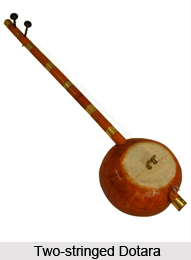 Four-stringed Dotara
Four-stringed Dotara
The four-stringed dotara is the single most important folk instrument used in various genres of folk music throughout the native land of Bengali people throughout West Bengal in India and Bangladesh. It is also played in Assam and eastern Bihar. It was greatly preferred by the wandering minstrels of the Baul community and originally adopted by them between 15th and 16th centuries. It may be considered a Bengali version of the rubab.
Just like the sarod, the body of a four-stringed dotara is made of wood and covered with leather. The four playing strings run across a bridge and a metal fingerboard and can be tuned in the same manner as those on the sarod, only higher given the instrument’s smaller size. From this point of view, dotara is referred to as a small and simplified version of the sarod.
It has mainly two forms “bangle†and “bhawaiyaâ€. The former originated in Rahr Bangla region (the area between Chota Nagpur Plateau on the west and Ganges Delta on the east) and is still predominantly played there. The “bangle†form of dotara is widely used in Bengali folk music and is prominent in the southern part of Bangladesh. It is in many ways reminiscent of the sarod, having metal strings and metal fingerboard which provides a brighter tone than the other instruments played in the area. The carvings at the upper end of its neck are usually designs of animals, peacocks or other birds. This form is especially popular among the Bauls and the Fakirs and is most often implied of the dotara. The music is played by predominantly two strings while the other strings render variations.
The “bhawaiya†form of dotara is almost extinct today and is more ancient than its “bangla†cousin. The strings are again the striking feature, made of thick cotton fibre or catgut, making its musical tone low-pitched. This version of the dotara tends to be found in the tribal areas of North Bangladesh and in West Bengal, Assam, and eastern Bihar in India. This style is less adorned and has a wooded fingerboard instead of the metal plate often found in the southern “bangla†version. It reminds more of a rubab in both sound and construction. It is used in eastern folk music forms of “bhhawaiyaâ€, “jaalpariyaâ€, “vaoaiya†and “mahishaliâ€.
Mirabai Dotara
The original version of dotara is the two-stringed one, also called the Mirabai Dotara. Mirabai was a queen who had devoted her life to Lord Krishna and played on this kind of dotara. It is a much simplified style traditionally used by spiritual singers as an accompaniment to their devotional chants. The open two strings are plucked in rhythm with the vocals and are either both tuned to the same tone or to a tone and another fitting note in accordance with the song being accompanied. This creates a supporting drone sound for the song and gives rhythmic passages a nice groove. The subtle sound makes the instrument ideal for singing at home alone or in very small groups. Its appearance and construction is different from that of a four-stringed one, having a large gourd resonator with goatskin cover.
